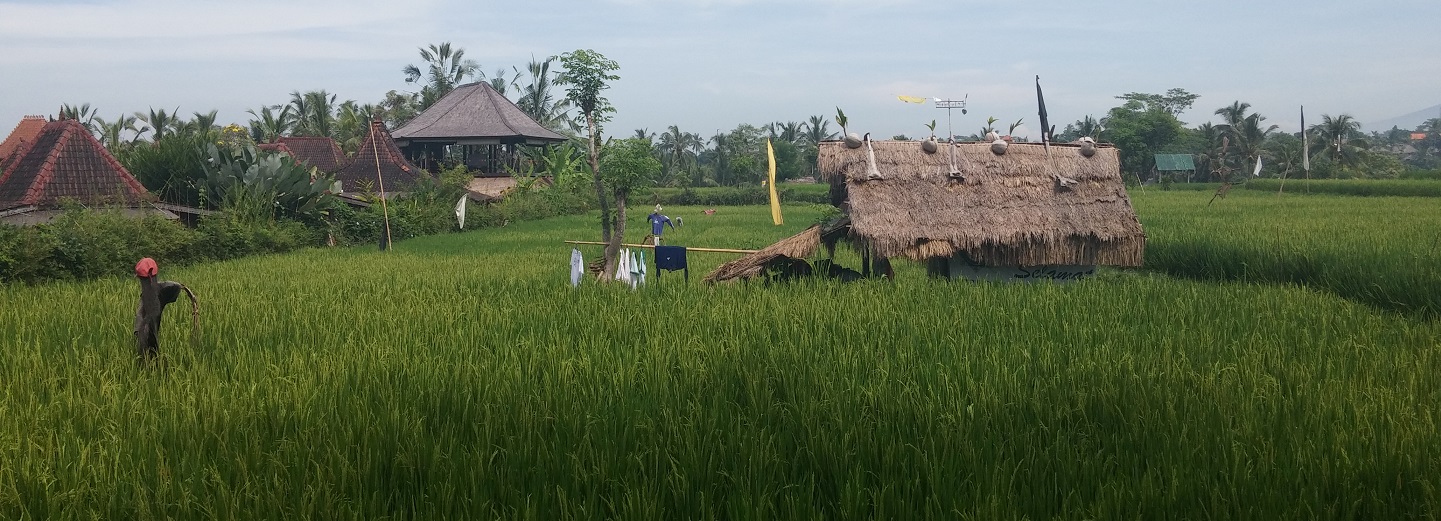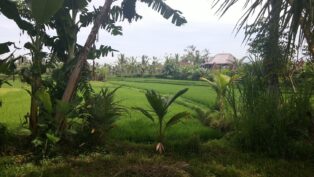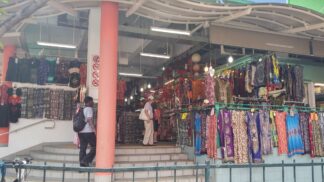We went on a beautiful 4 hour walk in the hills of Ubud (Ah-bood) just off the main street where rice fields and artists’ shacks dotted the landscape. We loved the swaying fields, huts where the farmers lived, numerous scarecrows that resembled farmers working, and palm trees set against the mountains. We met a number of fascinating people: several talented artists working in their small studios, a generous organic farmer, and a shy spice grower. We saw lovely holistic spas and retreats along the path and situated deeper in the fields and forests. I’m afraid we’re not good at actually getting any spa treatments. We even had one free massage from our hotel spa which we didn’t take the time to do! (see photos below the text).
The hike started up a large hill that opened to rice fields and became a very skinny, meandering path with some locals on motorbikes who were coming to and from town. And, as usual, it was hot, very hot. There was a variety of structures along the way. Simple tents and shacks, one room art studios, and lovely two story retreats.
We had a lovely but also slightly disconcerting interaction with the organic farmer. He came over to chat with us in limited English and showed us the farm’s many fruits and vegetables that they grow for their restaurant downtown. He pulled a turmeric and ginger plant out of the ground to show me since I told him I enjoy cooking. He also gave us fresh peapods out of the ground to eat. I ate mine while he showed me around. Afterward, Gene and I continued our walk and she said “I’m glad I remembered we’re not supposed to eat anything grown in water here so I tossed mine.” “Crap, I ate mine,” says I. Ok, if I’m going to get ill eating a tainted peapod at least this walk was worth it; fortunately I was fine. We’ve had several friends get ill in their travels in Asia and in Bali specifically. So far, only Singapore seems to have safe drinking water that I am aware of, for travelers anyway.
The walking paths were so minimal that we took a wrong turn and ended up on a path by some small houses on the way back to town. we came to a lovely stream and small waterfall a few feet off the path where a handsome young man about 17 was standing bathing nude. He watched us pass and didn’t seem to mind the old white ladies walking by.
You may notice in some photos, and the feature photo above, small offerings to Hindu deities. Twice each day, Hindus in Bali (mostly women I believe) create baskets of flowers, fruits and other significant symbols and place them at entrances wherever they are, work or home. Bali is one of the thousands of islands in Indonesia; I’ve read anywhere from 13,000 to 17,000 plus islands, but 8 of the islands have large populations. It’s one of the few inhabited islands that is predominantly Hindu (85%), the other islands have became predominantly Muslim, and Indonesia has the largest Muslim population in the world.

























































































